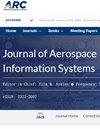Natural-Language-Processing-Enabled Quantitative Risk Analysis of Aerial Wildfire Operations
IF 1.5
4区 工程技术
Q2 ENGINEERING, AEROSPACE
引用次数: 0
Abstract
Aerial wildfire operations are high risk and account for a large number of firefighter deaths. The increasing intensity of wildfires is driving a surge in aerial operations, as well as interest to improve system safety and performance. In this work, wildfire aviation mishaps documented using the Aviation Safety Communiqué (SAFECOM) system are analyzed using a previously developed framework for hazard extraction and analysis of trends. Hazards and specific failure modes are extracted from the narrative data in SAFECOM forms using natural language processing techniques. Metrics for each hazard (including the frequency, rate, and severity) are calculated. We examine whether these metrics change over time and whether they are related to metadata, such as region and aircraft type. The results of the hazard analysis are presented in a risk matrix, identifying the highest and lowest risk hazards based on the rate of occurrence and average severity. The analysis of all SAFECOM reports indicated that the jumper operations hazards were classified as high risk; whereas the hydraulic fluid malfunctions, bucket or tank failures, retardant loading and jettison failures, prescribed burn operations, cargo letdown failures, and severe weather were classified as serious risk. However, when applied to a specific operational scenario, risk levels change across hazards.基于自然语言处理的空中野火行动定量风险分析
空中野火行动风险很高,造成大量消防员死亡。野火的强度不断增加,推动了空中作业的激增,以及提高系统安全性和性能的兴趣。在这项工作中,使用航空安全公报(SAFECOM)系统记录的野火航空事故使用先前开发的危害提取和趋势分析框架进行分析。使用自然语言处理技术从SAFECOM形式的叙述数据中提取危险和特定的失效模式。计算每个危害的度量(包括频率、速率和严重程度)。我们检查这些指标是否随时间而变化,以及它们是否与元数据(如地区和飞机类型)相关。危害分析的结果显示在风险矩阵中,根据发生率和平均严重程度确定最高和最低的风险危害。对所有SAFECOM报告的分析表明,跳线操作危险被归类为高风险;而液压油故障、铲斗或油箱故障、阻燃剂装载和抛弃物故障、规定的燃烧操作、货物卸载故障和恶劣天气则被列为严重风险。然而,当应用于特定的操作场景时,风险级别会因危害而变化。
本文章由计算机程序翻译,如有差异,请以英文原文为准。
求助全文
约1分钟内获得全文
求助全文
来源期刊

Journal of Aerospace Information Systems
ENGINEERING, AEROSPACE-
CiteScore
3.70
自引率
13.30%
发文量
58
审稿时长
>12 weeks
期刊介绍:
This Journal is devoted to the dissemination of original archival research papers describing new theoretical developments, novel applications, and case studies regarding advances in aerospace computing, information, and networks and communication systems that address aerospace-specific issues. Issues related to signal processing, electromagnetics, antenna theory, and the basic networking hardware transmission technologies of a network are not within the scope of this journal. Topics include aerospace systems and software engineering; verification and validation of embedded systems; the field known as ‘big data,’ data analytics, machine learning, and knowledge management for aerospace systems; human-automation interaction and systems health management for aerospace systems. Applications of autonomous systems, systems engineering principles, and safety and mission assurance are of particular interest. The Journal also features Technical Notes that discuss particular technical innovations or applications in the topics described above. Papers are also sought that rigorously review the results of recent research developments. In addition to original research papers and reviews, the journal publishes articles that review books, conferences, social media, and new educational modes applicable to the scope of the Journal.
 求助内容:
求助内容: 应助结果提醒方式:
应助结果提醒方式:


